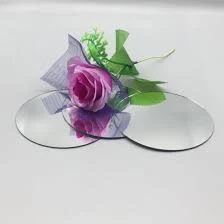

Different Types of Low-E Glass A Comprehensive Overview
Low-emissivity (Low-E) glass is a type of energy-efficient glass designed to minimize the amount of ultraviolet (UV) and infrared light that can pass through it while allowing visible light to enter. This technology has revolutionized the construction and window industries, providing significant benefits in terms of energy conservation and overall comfort in buildings. In this article, we will explore the different types of Low-E glass, their characteristics, advantages, and applications.
1. Hard Coated Low-E Glass
Hard coated Low-E glass, also known as pyrolytic Low-E glass, is produced through a manufacturing process that involves the application of a metallic oxide coating during the glass production. This coating hardens during the glass manufacturing process, making it very durable and resistant to scratches.
Advantages - Hard coated Low-E glass reflects infrared light and keeps heat inside during the winter months, contributing to improved thermal insulation. - It is suitable for both residential and commercial applications and can often be used in single-pane glazing.
Applications Commonly used in building facades and windows, where durability and scratch resistance are critical.
2. Soft Coated Low-E Glass
Soft coated Low-E glass is made by applying a thin layer of metallic oxide in a controlled environment after the glass has been manufactured. This process allows for a more efficient coating that has enhanced optical performance characteristics.
Advantages - Soft coated Low-E glass has superior solar heat gain control and reduces glare while allowing for maximum natural light to enter. - It offers better thermal insulation compared to hard-coated options, making it ideal for energy-efficient designs.
Applications This type of Low-E glass is often used in high-performance window systems, such as double or triple glazing, where thermal efficiency is paramount.

3. Low-E Glass with Argon Gas Filling
Low-E glass can be combined with argon gas filling between the panes of a double or triple-glazed window. Argon is a colorless, inert gas that adds another layer of insulation, enhancing the overall energy efficiency of the window.
Advantages - The combination of Low-E coatings and argon gas filling significantly reduces the rate of heat transfer, maintaining a comfortable indoor environment year-round. - This type of glazing helps in reducing energy bills by lessening the reliance on heating and cooling systems.
Applications Ideal for residential and commercial buildings aiming for high energy efficiency ratings.
4. Low-E Laminated Glass
Laminated Low-E glass combines the benefits of Low-E coatings with the safety and sound insulation properties of laminated glass. This type of glass consists of two or more layers of glass bonded together with a layer of polyvinyl butyral (PVB).
Advantages - Provides enhanced UV protection, noise reduction, and improved security features due to its construction. - Maintains the thermal benefits of Low-E technology while offering added durability.
Applications Frequently used in safety-sensitive environments such as schools, offices, and retail spaces where sound control and safety are important.
Conclusion
The use of Low-E glass is increasingly becoming a standard in the construction industry due to its energy-saving capabilities and additional benefits. Understanding the different types of Low-E glass available opens up a myriad of possibilities for architects and builders looking to create more efficient and comfortable living spaces. Whether it is hard coated, soft coated, argon filled, or laminated, each type serves a unique purpose and addresses specific needs in modern design, making Low-E glass an indispensable material in today’s energy-conscious world.